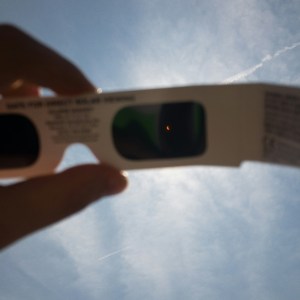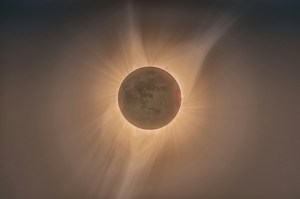If you are anywhere near the path of totality for the big event on Monday, April 8th, are you eclipse ready? I will argue that one of the most important parts of such prep is to ensure that you have a plan for safe eclipse viewing. This article may be of help:
Are Your Solar Eclipse Glasses Fake? Here’s How to Check | Scientific American
Legitimate eclipse glasses are at least 1,000 times darker than the darkest sunglasses you can buy….
While lab tests are the best way to determine whether glasses meet the ISO standard, Fienberg says there is a three-part test people can do at home if they’re concerned their eclipse viewers aren’t up to the task.
First, put your glasses on indoors and look around. The only things you should be able to see are very bright lights, such as a halogen bulb or a smartphone flashlight.
Then, if the glasses pass the indoor test, bring them outside—but don’t look at the sun just yet. Look around: it should be too dark to see distant hills, trees or even the ground.
If that second test is passed, keep the glasses on and quickly glance at the sun. You should comfortably see a bright, sharp-edged round disk. If your glasses pass all three tests, they are probably safe to wear. Still, Fienberg points out that it’s best to use them for only a few seconds every minute or so during the eclipse…
Here’s a reference for Suppliers of Safe Solar Viewers & Filters | Solar Eclipse Across America.
Your eyes need eclipse protection, but did you know that your phone/camera does too?
How to photograph the eclipse, according to NASA | Popular Science
Speaking of NASA, NASA needs your smartphone during April’s solar eclipse. Go citizen scientists!
And if you’re already looking forward to upcoming total solar eclipses, here’s a map to help you plan:

Credit: Shuyao Xiao; Source: NASA (data)
2106, here we come!
* * *



You must be logged in to post a comment.